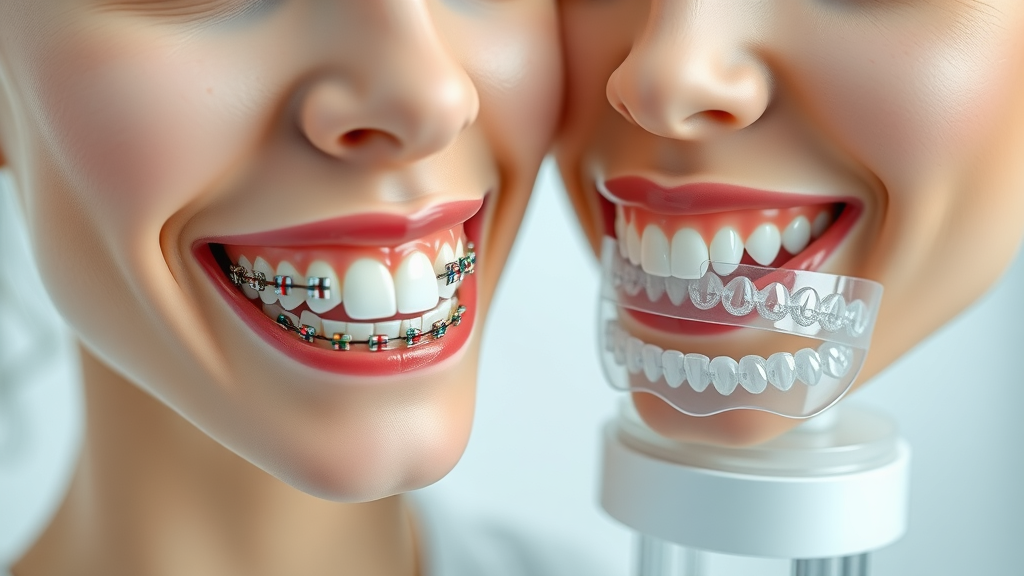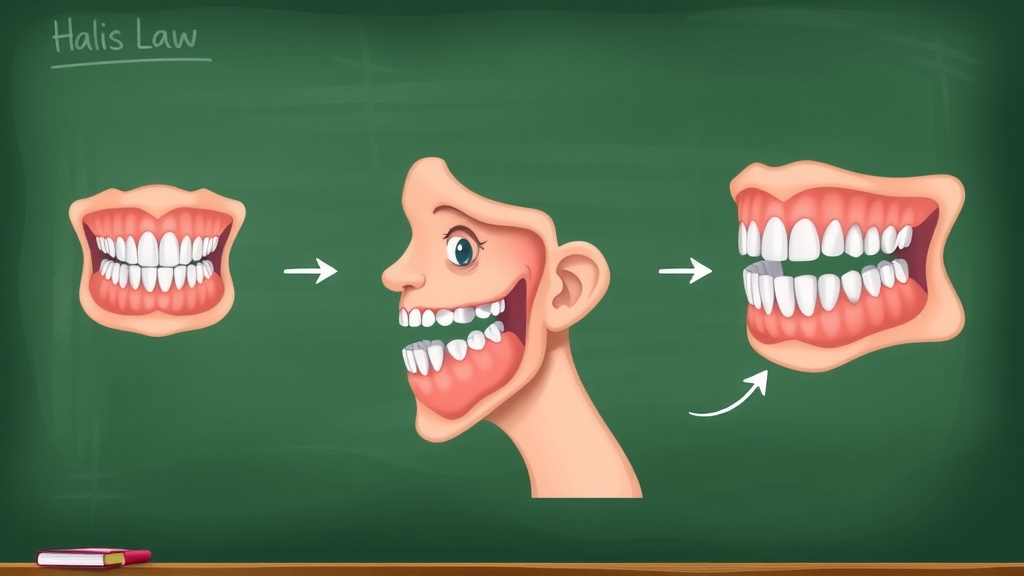Are you wondering if it’s safe for young children to get braces—and if starting orthodontic treatment early could truly make a difference? Many parents question whether early orthodontic care is necessary, effective, or even advisable for those under the age of 10. In this comprehensive guide, we’ll unpack the facts about braces for kids, explore expert recommendations, and help you make the most informed decision for your child’s oral health and future beautiful smile.
Unlocking the Truth: Are Braces Safe and Effective for Children Under 10?
"At what age is the best time to consider orthodontic treatment? The answer isn’t always as straightforward as you might think."
Many parents face a complicated question: are braces safe and effective for children under 10? The short answer is—sometimes. Treatment success depends on each child’s unique jaw development, baby teeth and adult teeth patterns, as well as specific dental issues like crooked teeth or crowded teeth. While orthodontists recommend evaluations as early as age 7, actual orthodontic treatment isn’t always necessary so soon. The early phase of care might simply involve monitoring and guiding dental development, not immediately placing metal braces or clear aligners on lower teeth or upper teeth with brackets and wire. The primary goal of early orthodontic care is to prevent severe bite problems and set the stage for a healthier, easier-to-treat smile as your child grows older.
If you’re seeking practical insight, here it is upfront: the safety and effectiveness of early orthodontic treatment depend on a proven need, the chosen treatment plan, and your orthodontist’s expertise. Read on to understand how and why, and get the clarity you need to make confident choices for your child.
Why Early Orthodontic Evaluation Matters
According to the American Association of Orthodontists, children should have their first orthodontic evaluation by age 7. Why so young? Early visits allow experts to spot orthodontic issues like crossbites, severe crowding, or jaw growth problems while your child still has most of their baby teeth. Early detection can reveal if your child needs braces, or if simple monitoring is best. It makes it possible to intervene at exactly the right stage—sometimes helping to prevent the need for more complex procedures down the line.
Early evaluation doesn’t always mean early braces for kids. Sometimes, the recommendation is to “watch and wait.” In other cases, gentle orthodontic appliances can guide developing jaws and teeth, making future orthodontic treatment shorter, less complex, or even unnecessary. Regular checkups also ensure your child’s oral health is protected, catching habits (like thumb-sucking) or issues that might harm their beautiful smile over time.

Exploring the Safety and Effectiveness of Braces for Kids
Braces for young children have evolved, focusing on both safety and effectiveness. Today’s brackets and wire—and clear aligners—are specifically designed with children’s comfort and oral health in mind. When prescribed for the right reasons, braces help shift crooked teeth, guide erupting adult teeth into place, and resolve bite problems that could affect dental development or speech. But each case is unique—while some kids benefit greatly, others might fare better waiting until more permanent teeth are present.
As with any medical intervention, early orthodontic treatment comes with both pros and cons. The decision is best made in partnership with your child’s dentist or orthodontist, carefully considering the benefits, risks, and your child’s current stage of oral health.
| Pros | Cons |
|---|---|
|
|
What You’ll Learn About Braces for Kids and Early Orthodontic Treatment
- The recommended age for orthodontic evaluation and treatment options
- Risks and benefits of braces for kids with baby teeth
- Clear aligners vs metal braces: which is better for children under 10?
- Expert recommendations on oral health and early orthodontic treatment
Understanding Orthodontic Treatment for Children Under 10
Why Orthodontic Treatment May Be Recommended Before Age 10
Orthodontic treatment before age 10—sometimes called “early treatment” or “Phase 1 orthodontics”—may be suggested when specific problems could worsen without timely intervention. Dental issues like severely crooked teeth, crowded teeth, crossbites, or growth-related concerns could impact speech, nutrition, and even oral health. Some children’s jaws or palates may need gentle guidance while growth plates are still flexible.
Initiating care before all permanent teeth have erupted can, in certain cases, correct or minimize future orthodontic issues. For example, addressing a crossbite early might prevent jaw asymmetry, and creating space with expanders or partial brackets and wires can limit severe crowding later. However, not every child needs early orthodontic intervention. Careful screenings and a personalized treatment plan are essential.

Orthodontic Treatment Options: Braces, Clear Aligners, and More
Today’s options for orthodontic treatment in young children go far beyond classic metal braces. While brackets and wire remain reliable for precise correction, clear aligners have grown in popularity for their comfort and subtle appearance—though aligner use in kids under 10 is limited and must be carefully evaluated. Other treatment options include palatal expanders, space maintainers, and retainers.
The best treatment option for your child will depend on their specific orthodontic issues, the number of baby teeth remaining, and their ability to care for their mouth and the appliances. Your orthodontist will help decide, using their expertise and considering input from both the child and parent.
Early Orthodontic Treatment: Recognizing the Signs and Timing
How do you know if your child needs braces—or another kind of early orthodontic intervention? Key signs include difficulty chewing or biting, obvious crooked teeth, mouth breathing, persistent thumb-sucking, or early loss of baby teeth. A dental professional can recognize more subtle issues, such as jaw misalignment or crossbites—sometimes invisible to the untrained eye.
If you notice any of these concerns, schedule an early orthodontic consultation—especially if your child is 7 or older. The earlier a professional can assess their “dental roadmap,” the more options you’ll have for supporting their oral health and overall confidence.
Evaluating the Safety: Are Braces Safe for Kids With Baby Teeth?
Current Research: Are Braces Safe and Effective for Children Under 10?
The question—are braces safe and effective for children under 10—has been the subject of many studies. Research shows that early orthodontic intervention can be safe and successful, especially in cases where structural issues like bite misalignment or severe crowding risk long-term oral complications. Professional guidelines from respected organizations like the American Association of Orthodontists and the Association of Orthodontists recommend careful screening, with actual appliance use reserved for cases that will genuinely benefit.
Effectiveness depends on proper case selection. Some dental problems are best addressed early, while others should wait for more permanent teeth to erupt. The key is thorough evaluation and ongoing monitoring—never a “one-size-fits-all” approach. Modern braces and clear aligners are built to accommodate young mouths, prioritizing safety, comfort, and ease of cleaning to support oral health.
Risks and Complications of Early Orthodontic Treatment
Like any medical procedure, early orthodontic treatment comes with potential risks. These can include discomfort, gum irritation, difficulties with oral hygiene, and the possibility of decalcification or cavities if cleaning is neglected around brackets and wires. Starting too soon can sometimes lead to the need for additional or prolonged orthodontic care later—especially if major adult teeth have yet to erupt and shift naturally.
Your orthodontist will weigh these risks against the benefits. Comprehensive treatment plans include education on proper care, close monitoring, and—when possible—using appliances designed specifically for smaller mouths. Candid conversations about potential complications are an important part of the decision-making process for families.

Essential Questions to Ask If Your Child Needs Braces
If your dentist or orthodontist recommends early intervention, don’t hesitate to ask about your child’s unique case. Consider:
- What problem is the orthodontist trying to solve with early intervention?
- How many baby teeth are left, and will any need to fall out before starting?
- What type of appliance is suggested—metal braces, clear aligners, or something else?
- Are there risks to waiting for more permanent teeth to come in?
- What are the expected health benefits versus risks?
- How will you work together to keep your child’s oral health a top priority?
Effectiveness of Early Orthodontic: Will Kids Benefit Long-Term?
Expected Outcomes: Are Braces Safe and Effective for Children Under 10?
When recommended and overseen by experienced professionals, early orthodontic intervention can offer significant outcomes. Young children whose jaws are still developing may achieve improved alignment, corrected bite problems, reduced risk of trauma to protruding teeth, and decreased need for tooth extractions. Effective care often translates to shorter, less intensive treatments when permanent teeth arrive.
However, not all orthodontic issues are best managed this early. Certain types of crooked teeth or spacing may resolve naturally as adult teeth erupt, while some dental challenges truly do benefit from earlier, targeted correction. Following a customized, evidence-based treatment plan is the surest path to a satisfactory result.
Long-Term Health Benefits of Early Orthodontic Intervention
Correcting dental irregularities early does more than just straighten teeth. It helps children maintain better oral health, avoid abnormal tooth wear, and prevent speech or eating difficulties that might otherwise impact self-esteem and social development. The health benefits of a properly aligned bite can be lifelong, as teeth are easier to keep clean and suffer less damage from uneven pressure. Plus, when children feel confident in their beautiful smile, the social and emotional advantages can be just as valuable as the physical ones.
Long-term research underscores one clear finding: early orthodontic treatment should always be based on individual need—not simply age or a one-size-fits-all approach. When thoughtfully applied, it can set kids up for lifelong success in oral health and self-assurance.

Metal Braces vs Clear Aligners: Best Orthodontic Treatment Option for Young Children
Comparing Metal Braces and Clear Aligners for Kids
Metal braces have been the standard for decades, combining durability with precision for complex dental corrections in children. They consist of brackets and wires fixed to teeth, ideal for moving a wide range of tooth types—whether baby teeth or permanent teeth. In contrast, clear aligners offer a nearly invisible alternative but are often reserved for older children or teens who can responsibly wear and care for removable trays. Clear aligners are less commonly used for those under 10, as the presence of mixed dentition or erupting teeth can complicate fit and effectiveness.
When considering the right treatment option for your child, your orthodontist will assess their current dental stage, oral habits, and ability to maintain both appliance and oral health. Your decision should prioritize long-term benefits, comfort, and the likelihood of adhering to the care routine.

Pros and Cons: Which Treatment Option Is Safer and More Effective?
-
Metal Braces: Advantages and Disadvantages for Children Under 10
Advantages: Highly effective for a wide range of orthodontic issues; fixed in place so there's no risk of losing them; suitable for complex bite correction or severe crooked teeth.
Disadvantages: May cause discomfort or irritation; require excellent cleaning to prevent cavities; often visible, which can affect self-esteem. -
Clear Aligners: When Are They Appropriate for Young Kids?
Advantages: Less visible; removable for eating and brushing; comfortable for many children.
Disadvantages: Not suitable for all children, especially those with many baby teeth or who may lose/forget to wear them; may not address severe orthodontic issues. -
How Oral Health Impacts Treatment Option Selection
Strong oral health is essential for any orthodontic appliance, but especially for braces for kids under 10. Children prone to cavities or with difficulty maintaining hygiene may do better with appliances that are easy to clean or removable, depending on the specific treatment plan suggested by their orthodontist.
Dental Development: How Baby Teeth and Early Treatment Affect Results
Understanding Developmental Stages: Why Age Matters
A child’s dental development follows a predictable pattern—baby teeth begin falling out around age 6 and are gradually replaced by permanent teeth up until about age 12 or 13. This mixed dentition phase, where both sets are present, is why the timing of orthodontic treatment is so individualized. Starting too early may not deliver the desired effects, as ongoing changes can shift alignment. Conversely, missing the window for interceptive treatment can mean missed opportunities to guide jaw or tooth development.
For many children, periodic monitoring by an orthodontist helps determine the best timing and approach—whether to use metal braces, clear aligners, or simply wait until more adult teeth are in place.
Oral Health Considerations During Early Orthodontic Treatment
Maintaining optimal oral health during early orthodontic treatment is non-negotiable. Braces and similar appliances can make brushing and flossing more challenging, leading to increased risk of plaque, cavities, or decalcification around brackets and wires. Parents must support children in forming strong cleaning habits, attend all scheduled check-ups, and follow dietary advice to minimize sugary or sticky foods.
Your dentist and orthodontist will provide tailored advice for keeping your child’s mouth healthy and minimizing these risks throughout the entire orthodontic experience.

Timing Treatment: When Early Orthodontic Is Most Effective
Not every child benefits from braces during the first signs of trouble. The best results often come when an orthodontist times intervention to coincide with critical growth or eruption periods—correcting jaw discrepancies, opening space, or guiding incoming adult teeth. This is why customized assessment is essential. A rushed approach or unnecessary early braces for kids can lead to extra time in appliances or repeat treatments years later, so always seek opinions from trusted professionals before beginning.
| Braces with Mostly Baby Teeth | Braces with Mostly Permanent Teeth |
|---|---|
|
|
People Also Ask
Should children under 10 get braces?
Answer: A pediatric orthodontist may recommend braces for children under 10 in cases of severe misalignment, bite problems, or early loss of baby teeth, but a thorough evaluation is essential.
What are the disadvantages of braces for kids?
Answer: Disadvantages can include oral discomfort, difficulty maintaining oral hygiene, impacts on self-esteem, and potential risks if treatment is started too early.
At what age are braces not recommended?
Answer: Braces are generally not recommended for children whose jaws and teeth have not developed enough to benefit from treatment, such as those with mostly baby teeth.
Is it normal for a 9 year old to have braces?
Answer: It’s becoming more common for 9-year-olds to have braces, especially if early orthodontic treatment is advised for healthy development.
Expert Quotes: Insights on Orthodontic Treatment For Children Under 10
"Early orthodontic intervention can prevent more serious dental issues later, but must be tailored to the individual child's development." – Dr. Lisa Tran, Pediatric Orthodontist
Key Takeaways: Are Braces Safe and Effective for Children Under 10?
- Early orthodontic evaluation can identify potential issues but does not always mean immediate treatment.
- Braces and other orthodontic treatment options for kids under 10 must be considered on a case-by-case basis.
- Consulting an experienced orthodontist is crucial before choosing a treatment plan for young children.
Frequently Asked Questions (FAQs) About Are Braces Safe and Effective for Children Under 10?
-
What are the signs my child needs braces before age 10?
Signs include early or late loss of baby teeth, displaced or crowded teeth, challenges in chewing or biting, mouth breathing, or frequent biting of the cheek or roof of the mouth. If you notice any of these, consult an orthodontist for evaluation. -
How do I maintain my child’s oral health during orthodontic treatment?
Support your child in brushing after every meal, flossing daily, and using fluoride mouthwash. Ensure all orthodontic appliances are thoroughly cleaned, and maintain regular dental and orthodontic check-ups. -
Are clear aligners a good option for children under 10?
Clear aligners are generally not recommended for children who have mostly baby teeth or mixed dentition, but may be suitable in certain cases as determined by your orthodontist. -
Will early treatment mean my child needs braces again later?
Sometimes, early intervention is the first phase of a two-phase treatment plan. Your child may need a second round of treatment when more permanent teeth arrive to achieve final alignment.
Conclusion: Making the Right Decision About Braces for Kids
Balancing Safety, Effectiveness, and Your Child’s Unique Needs
Decisions about early orthodontic treatment should always be based on your child’s individual development, needs, and the expertise of your orthodontist. Prioritize their comfort, future health, and self-confidence.
Next Steps for Parents Considering Early Orthodontic Treatment
If you’re wondering “are braces safe and effective for children under 10?”, start with an expert evaluation—and trust in a customized approach. Knowledge and professional guidance are your best tools for ensuring your child’s healthy smile for years to come.
Subscribe Now for Trusted Guidance on Kids’ Orthodontics
Subscribe now to get the latest Grand Strand orthodontic guides, tips, and updates — right to your inbox. No spam. Just smiles.
When considering orthodontic treatment for children under 10, it’s essential to understand the safety and effectiveness of early interventions. The American Association of Orthodontists recommends that children have their first orthodontic evaluation by age 7. This early assessment allows orthodontists to identify potential issues such as misaligned teeth, bite problems, or jaw growth discrepancies. However, initiating braces or other treatments at this young age is not always necessary. In many cases, orthodontists may adopt a “wait and see” approach, monitoring the child’s development before deciding on the appropriate time to begin treatment. (thomasortho.com)
Research indicates that for certain common dental issues, delaying treatment until most permanent teeth have erupted can be more beneficial. Starting braces too early may lead to prolonged treatment times and increased costs. Therefore, while early evaluations are crucial for planning, the actual commencement of orthodontic treatment should be tailored to each child’s unique dental development and needs. (npr.org)
In summary, braces can be safe and effective for children under 10 when there’s a clear indication for early intervention. However, for many children, waiting until they are older may be more advantageous. Regular consultations with an orthodontist will help determine the most appropriate timing and treatment plan for your child’s oral health.
 Add Row
Add Row  Add
Add 




Write A Comment